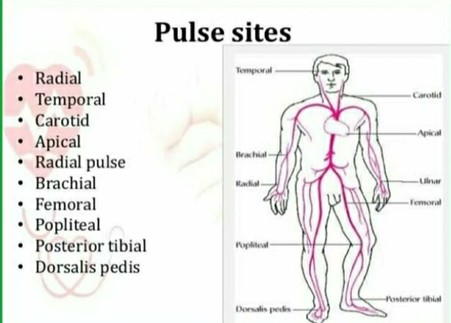Patient Data.
What are three goals of therapy for this client? Select three that apply.
Correct electrolytes that are out of normal range.
Promote oxygenation to tissues.
Prevent hyperventilation.
Reverse dehydration.
Replace insulin.
Provide respiratory support.
Correct Answer : A,D,E
Choice A rationale:
Correcting electrolytes that are out of normal range is a crucial goal of therapy for this client. In diabetic ketoacidosis (DKA), the body’s cells are unable to use glucose for energy due to a lack of insulin. This leads to the breakdown of fat for energy, producing ketones as a by-product. Ketones are acidic and can cause the blood’s pH to decrease, leading to metabolic acidosis. This process also leads to an increased production and excretion of electrolytes such as potassium and sodium. Therefore, correcting these electrolyte imbalances is a key goal of therapy.
Choice B rationale:
While promoting oxygenation to tissues is generally important in critical care, it is not a specific goal in the management of DKA. The primary issues in DKA are metabolic in nature, including hyperglycemia, ketosis, and acidosis.
Choice C rationale:
Preventing hyperventilation is not a specific goal in the management of DKA. Hyperventilation in DKA is a compensatory mechanism for metabolic acidosis (Kussmaul breathing). The body tries to expel more carbon dioxide to reduce the acidity of the blood.
Choice D rationale:
Reversing dehydration is another important goal of therapy for this client. In DKA, high blood glucose levels lead to osmotic diuresis, where water is drawn into the urine from the blood, leading to dehydration. This can cause hypotension and reduced tissue perfusion. Therefore, reversing dehydration through fluid replacement is a key part of treatment.
Choice E rationale:
Replacing insulin is a fundamental goal of therapy for this client. Insulin deficiency is the primary cause of DKA. Insulin allows glucose to enter cells where it can be used for energy, preventing the breakdown of fat for energy and the subsequent production of ketones.
Choice F rationale:
Providing respiratory support may be necessary in severe cases of DKA where the patient’s compensatory respiratory efforts are insufficient to maintain adequate gas exchange. However, it is not one of the primary goals of therapy in DKA management.
Nursing Test Bank
Naxlex Comprehensive Predictor Exams
Related Questions
Correct Answer is A
Explanation
Choice A rationale:
The client's statement, "I should avoid foods that are high in vitamin K," indicates an understanding of the medication. Warfarin is an anticoagulant medication that works by inhibiting vitamin K-dependent clotting factors. Consistent intake of vitamin K-containing foods helps maintain a stable INR (International Normalized Ratio) and warfarin's effectiveness. Clients on warfarin should be educated about avoiding drastic changes in their vitamin K intake.
Choice B rationale:
Taking warfarin with food or on an empty stomach doesn't significantly impact its efficacy. Therefore, this statement is not indicative of the client's understanding of the medication.
Choice C rationale:
The statement "I should report any unusual bleeding or bruising to my provider" is important but doesn't specifically reflect an understanding of warfarin. It's a general caution for anyone taking anticoagulants.
Choice D rationale:
While it's important to avoid excessive use of medications like aspirin that can increase the risk of bleeding, this statement doesn't directly demonstrate an understanding of warfarin itself.
Correct Answer is C
Explanation
- A radial pulse is the pulse felt at the wrist, where the radial artery runs along the thumb side of the forearm. It is one of the most common sites for measuring a person's heart rate.
- To measure a radial pulse, the examiner should place two or three fingers over the radial artery, just below the wrist crease, and apply gentle pressure until a pulsation is felt. The examiner should not use the thumb, as it has its own pulse and may interfere with the accuracy of the measurement. The examiner should count the number of beats for 15, 30, or 60 seconds, depending on the regularity and rate of the pulse.
- In the picture, the unlicensed assistive personnel (UAP) is using the thumb to measure the radial pulse, which is incorrect. The practical nurse (PN) should demonstrate the correct pulse site to the UAP and explain why using the thumb is not appropriate. This will help to ensure that the UAP obtains an accurate and reliable pulse rate for the client.
Therefore, option C is the correct answer, while options A, B, and D are incorrect.
Option A is incorrect because instructing the UAP to report any abnormal findings does not address the error in technique.
Option B is incorrect because reminding the UAP to check the pulse volume does not address the error in technique.
Option D is incorrect because confirming the accuracy of the pulse rate obtained by the UAP does not address the error in technique.

Whether you are a student looking to ace your exams or a practicing nurse seeking to enhance your expertise , our nursing education contents will empower you with the confidence and competence to make a difference in the lives of patients and become a respected leader in the healthcare field.
Visit Naxlex, invest in your future and unlock endless possibilities with our unparalleled nursing education contents today
Report Wrong Answer on the Current Question
Do you disagree with the answer? If yes, what is your expected answer? Explain.
Kindly be descriptive with the issue you are facing.
